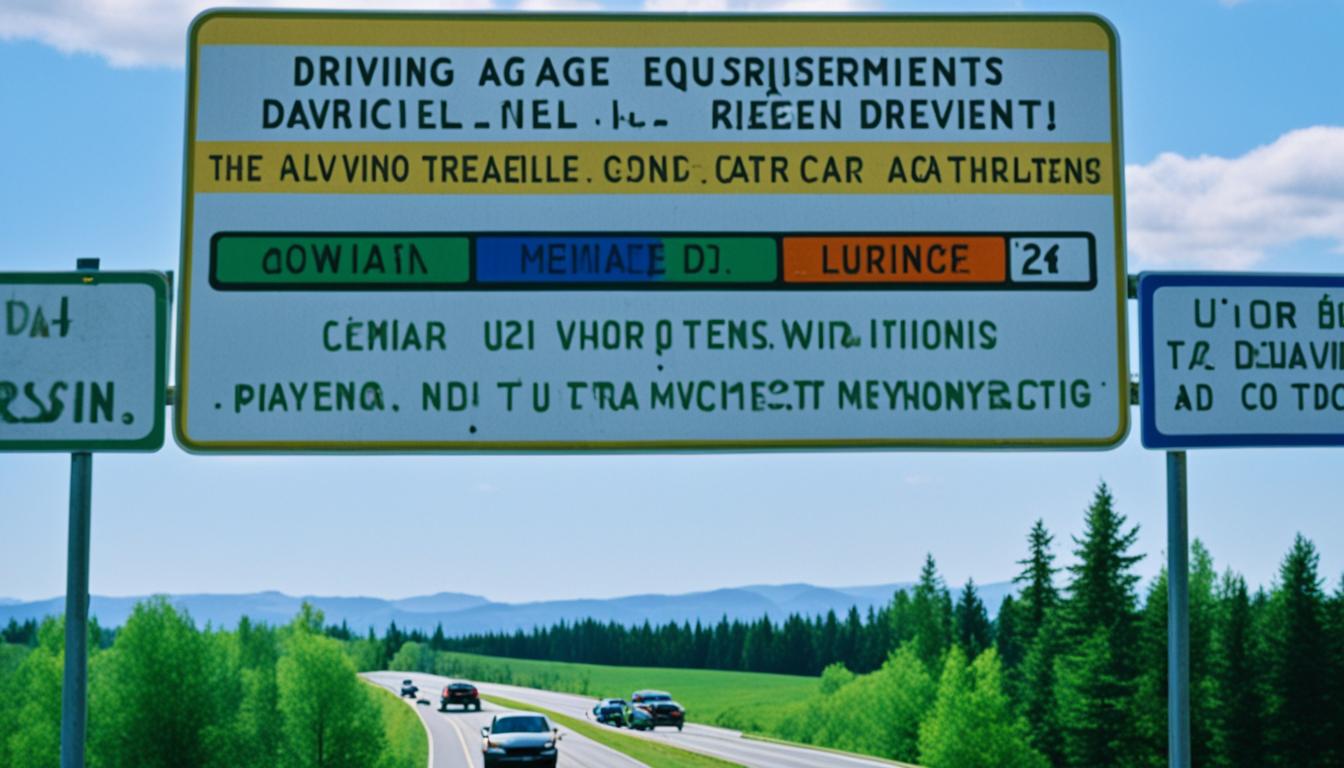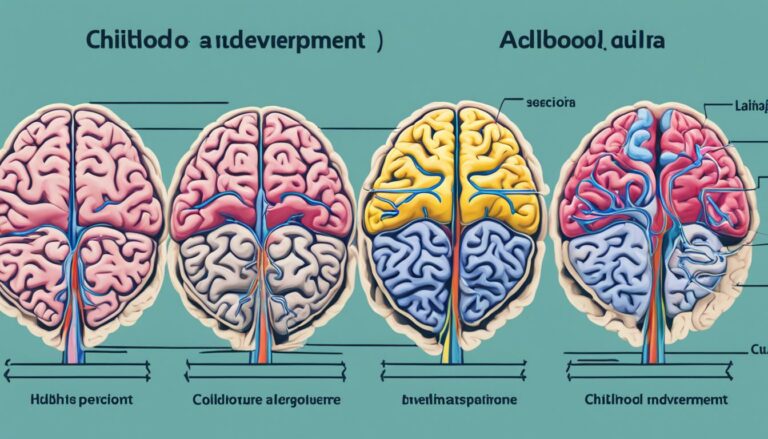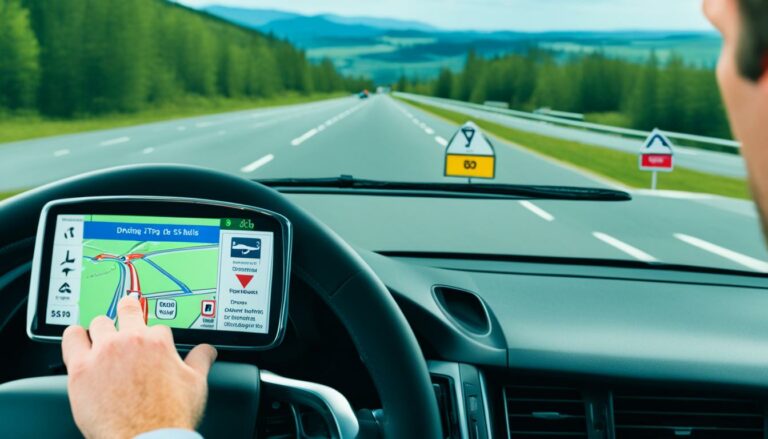U.S. Driving Age Requirements Explained
Learning to drive in the United States varies from state to state, with each state having its own set of requirements for learner’s permits and driver’s licenses. Whether you’re a teenager eager to get behind the wheel or a parent navigating the process with your child, understanding the driving age requirements is crucial.
Some states allow teenagers to obtain a permit as young as 14, while others require them to be at least 16. The minimum age for a full driver’s license also varies, with some states setting the age at 18 or even 21. These variations reflect the diverse perspectives of state lawmakers when it comes to ensuring road safety and responsible driving.
Key Takeaways:
- The driving age requirements in the United States vary by state.
- Some states allow teenagers to obtain a permit as young as 14, while others require them to be at least 16.
- The minimum age for a full driver’s license also varies, ranging from 16 to 21.
- Understanding the driving age requirements in your state is important for both teenagers and parents.
- Adhering to the laws and regulations and prioritizing safety on the road are essential for young drivers.
Learner’s Permit vs. Driver’s License
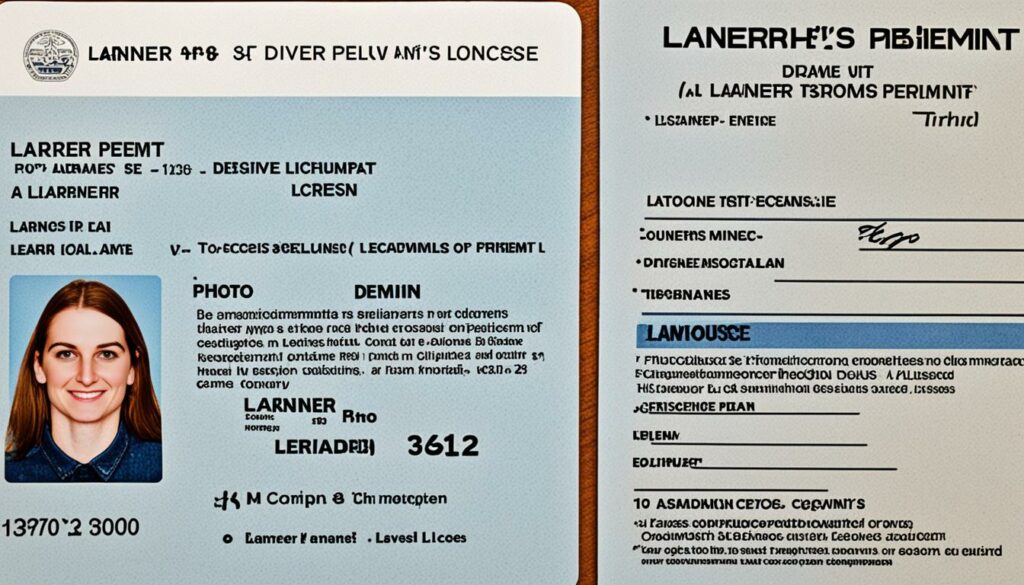
In the United States, new drivers are typically required to obtain a learner’s permit before they can get a driver’s license. A learner’s permit allows teenagers to drive under the supervision of an adult, usually a parent or guardian. It may include restrictions such as driving with a licensed adult, not driving at night, and limiting the number of passengers.
Once the teenager has gained enough driving experience and meets other requirements, they can apply for a driver’s license, which allows them to drive without supervision.
| Learner’s Permit | Driver’s License |
|---|---|
| Allows driving under supervision | Allows driving without supervision |
| May have restrictions (e.g., adult supervision, passenger limits) | No restrictions (except for specific state laws) |
| Requires a learning period and meeting specific requirements | Requires fulfillment of state’s full driver’s license criteria |
Getting a learner’s permit is the first step towards getting a driver’s license in the United States. It provides new drivers with the opportunity to gain driving experience under the guidance of a licensed adult. Once they have developed the necessary skills and met the requirements, they can upgrade to a full driver’s license.
State-by-State Guide to Driving Ages
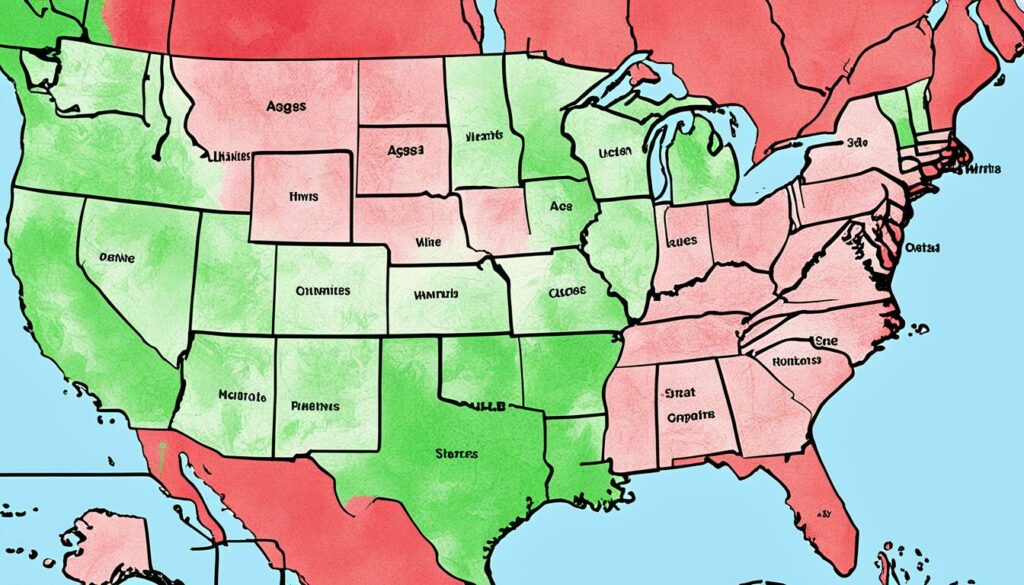
Understanding the minimum driving age requirements in each state is essential for young drivers and their parents. While some states allow teenagers to obtain a learner’s permit at an early age, others have higher age requirements. Let’s take a closer look at the driving age by state and the minimum driving age in different parts of the United States.
Driving Age by State
Each state in the United States has its own specific driving age requirements. Here are some examples:
| State | Learner’s Permit Age | Full License Age |
|---|---|---|
| Alabama | 14 | 16 |
| Alaska | 14.5 | 16.5 |
| New Jersey | 16 | 17 |
| New York | 16 | 18 |
| Indiana | 16.5 | 21 |
These are just a few examples, and the driving age requirements can vary widely across the United States. It’s important to check the specific laws and regulations in your state to ensure compliance.
Minimum Driving Age by State
Not only does the age to obtain a learner’s permit differ, but the minimum age for a full driver’s license also varies. In Alaska, for example, teenagers can obtain their full license at 16.5 years old, while in Indiana, they must wait until they turn 21. Here’s a summary of the minimum driving age by state:
- Alabama: Learner’s Permit Age – 14, Full License Age – 16
- Alaska: Learner’s Permit Age – 14.5, Full License Age – 16.5
- New Jersey: Learner’s Permit Age – 16, Full License Age – 17
- New York: Learner’s Permit Age – 16, Full License Age – 18
- Indiana: Learner’s Permit Age – 16.5, Full License Age – 21
These are just a few examples, and there are many more variations across the United States.
It’s crucial for young drivers and their parents to familiarize themselves with the specific driving age requirements in their state. By adhering to these regulations, teenagers can ensure a smooth and legal path to obtaining their driver’s license.
Stay tuned for the next section where we’ll explore graduated driver licensing programs and their impact on young drivers’ journey to independence on the road.
Graduated Driver Licensing Programs

Many states in the United States have implemented graduated driver licensing programs to ensure that young drivers gain experience behind the wheel in a controlled manner. These programs provide a structured approach to learning to drive and help reduce the risk of accidents among new drivers.
The process typically begins with obtaining a learner’s permit, which allows teenagers to practice driving under the supervision of a licensed adult. This phase helps young drivers develop basic skills and knowledge of traffic laws. During this stage, there may be restrictions such as driving with a licensed adult, a curfew, or limitations on the number of passengers allowed in the vehicle.
Once the teenage driver has gained enough experience and meets the requirements, they can progress to a provisional or junior license. This stage grants them more independence and fewer restrictions but still maintains certain limitations to ensure their safety on the road. These limitations can include curfews, restrictions on passengers, or the prohibition of electronic device use while driving.
Finally, after fulfilling all the requirements, young drivers can obtain a full driver’s license. This license allows them to drive without any restrictions and affirms their competency and readiness to navigate the roads independently.
| Graduated Driver Licensing Program | Age Eligibility | Requirements |
|---|---|---|
| Learner’s Permit | Varies by state | – Completion of a driver’s education course – Passing a written exam – Minimum age requirement |
| Provisional/Junior License | Varies by state | – Completion of a certain number of driving hours – Passing a behind-the-wheel driving test – Minimum age requirement |
| Full Driver’s License | Varies by state | – Completion of all requirements of the learner’s permit and provisional/junior license stages – Minimum age requirement |
Implementing graduated driver licensing programs has proven to be an effective strategy in reducing the number of accidents involving young and inexperienced drivers. By gradually increasing driving privileges and enforcing specific restrictions during the learning stages, these programs help young drivers gain valuable experience and develop safe driving habits before obtaining a full driver’s license.
Driving Age Restrictions for Young Drivers

Young drivers with a provisional or junior license are subject to certain driving age restrictions aimed at promoting safety and reducing risks associated with inexperienced drivers. These driving age restrictions may include:
- Restricted driving hours: Some states impose curfews on young drivers, prohibiting them from driving during specific hours, typically during nighttime. This restriction helps ensure that young drivers gain experience during daylight hours when visibility is better and road conditions are generally safer.
- Limited passengers: Many states place restrictions on the number of passengers that young drivers can have in the car with them. This restriction aims to reduce distractions and the potential for risky behaviors when young drivers are behind the wheel. For example, some states may limit young drivers to having only one non-family passenger in the car at a time.
- Prohibited use of electronic devices: To minimize distractions while driving, young drivers with a provisional or junior license are often prohibited from using electronic devices, such as cell phones or portable music players, while operating a vehicle. This restriction encourages young drivers to focus on the road and reduces the likelihood of accidents caused by distracted driving.
By implementing these driving age restrictions and promoting responsible driving behaviors among young drivers, states aim to create safer roads and improve overall road safety. It is crucial for young drivers to adhere to these restrictions and prioritize safety for themselves and others sharing the road.
The importance of driving age restrictions
Driving age restrictions play a crucial role in ensuring the safety of young drivers and minimizing the risks associated with their lack of experience. These restrictions are not meant to hinder or penalize young drivers, but rather to provide a framework for safe driving practices during the early stages of their driving journey. By adhering to these restrictions, young drivers can develop essential skills, gain valuable experience, and build a solid foundation for a lifetime of responsible and safe driving.
Car Insurance and Learner’s Permits
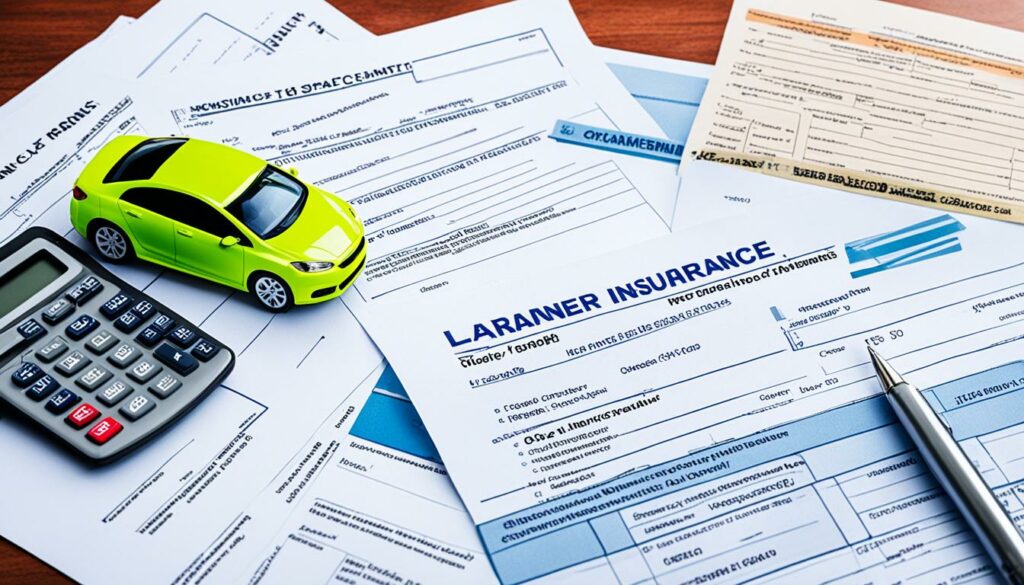
When it comes to car insurance for learner’s permits, most teenagers are covered under their parents’ policy. The insurance company may require parents to list their teen drivers on the policy, but this generally does not result in an increase in premiums. However, things change when the teenager obtains a driver’s license.
Once a teenager becomes a licensed driver, they should be added to the family’s car insurance policy. This is because young and inexperienced drivers are considered higher risk, which often leads to higher insurance rates. Insurance companies take into account factors such as the driver’s age, driving record, and type of vehicle when determining premiums.
| Factors Impacting Car Insurance Rates for New Drivers | Explanation |
|---|---|
| Age | The younger the driver, the higher the risk perceived by insurance companies. |
| Driving Record | Accidents or traffic violations can increase insurance rates for new drivers. |
| Type of Vehicle | Certain vehicles, such as high-performance cars, are more expensive to insure. |
| Location | Insurance rates may vary depending on where the driver lives, as some areas have higher accident rates. |
While the cost of car insurance for new drivers may be higher, there are ways to potentially lower premiums. For example, maintaining a clean driving record, completing driver’s education courses, and opting for a safe and reliable vehicle can often result in lower insurance rates. Additionally, some insurance companies offer discounts for good grades, which can be an incentive for young drivers to focus on their academics.
It’s important for both parents and teen drivers to understand their car insurance options and find coverage that suits their needs. By being proactive and comparing quotes from different insurance providers, it’s possible to find affordable and comprehensive coverage for new drivers.
Remember, car insurance is not only a legal requirement but also provides financial protection in the event of an accident. It’s crucial for parents and new drivers to prioritize safety on the road and ensure they have adequate coverage.
Minimum Driving Age Worldwide
The minimum driving age varies across countries worldwide. Different nations have established their own regulations regarding the age at which individuals can obtain a driver’s license. These age requirements may vary depending on the type of vehicle being driven and specific restrictions imposed by each country.
In some countries, such as Australia and Canada, the minimum driving age is as low as 16. This means that individuals as young as 16 years old can legally operate a motor vehicle. On the other hand, countries like Japan and South Korea have set the minimum driving age at 18, requiring individuals to be at least 18 years old before they can obtain a driver’s license.
It’s important to note that these age requirements are subject to change and may differ based on the specific rules and regulations of each country. Additionally, certain countries may impose additional restrictions, such as the duration of a learner’s permit or the number of supervised driving hours required before being eligible for a driver’s license.
“The minimum driving age varies across countries worldwide. Different nations have established their own regulations regarding the age at which individuals can obtain a driver’s license.”
Example: Driving Age Requirements in Select Countries
| Country | Minimum Driving Age | Additional Restrictions |
|---|---|---|
| Australia | 16 | No alcohol tolerance for provisional drivers |
| Canada | 16 (varies by province) | Novice driver restrictions for the first few years |
| Japan | 18 | Driving curfew for the first year of licensure |
| South Korea | 18 | Required driving training and exams |
As shown in the table above, there are notable differences in the minimum driving age and additional restrictions among select countries. These variations highlight the diverse approaches taken by different nations to ensure road safety and responsible driving practices.
Understanding the minimum driving age requirements and associated restrictions in various countries is essential for individuals who plan to drive internationally or are interested in global driving norms. It is important to research and familiarize oneself with the requirements of the specific country before traveling or attempting to obtain a driver’s license.
Importance of Driver’s Education
https://www.youtube.com/watch?v=Bz1P2IE8VHU
Driver’s education is a crucial step in the process of learning to drive safely and responsibly. Many states in the United States require young drivers to complete a driver’s education course as part of their licensing process. These courses provide comprehensive instruction on traffic laws, defensive driving techniques, and other essential skills that are crucial for becoming a competent driver.
With the ever-increasing number of vehicles on the roads, it is imperative that new drivers have a solid foundation of knowledge and practical skills to navigate safely in various traffic situations. Driver’s education programs play a vital role in equipping young drivers with the necessary tools to make informed decisions on the road and minimize the risk of accidents.
Driver’s education encompasses both classroom instruction and practical driving experience, enabling learners to understand the rules of the road, traffic signs, and road markings. In addition, aspiring drivers gain valuable insights into defensive driving strategies, hazard perception, and crash prevention techniques.
Moreover, driver’s education emphasizes the importance of responsible and ethical driving behaviors. It promotes safe driving habits such as obeying speed limits, maintaining a safe following distance, avoiding distractions, and practicing courteous behavior towards other road users. By instilling these values early on, driver’s education programs aim to create a culture of safe driving among young drivers.
“The aim of driver’s education is not just to pass the licensing test, but to create responsible drivers who prioritize safety and contribute to a safer road environment for everyone.”
Driver’s education is not limited to new drivers. It is also valuable for experienced drivers who may benefit from refresher courses to enhance their driving skills and stay up to date with the latest traffic laws and regulations.
Benefits of Driver’s Education:
- Enhances knowledge of traffic laws and regulations
- Develops defensive driving skills
- Improves hazard perception and crash avoidance abilities
- Promotes responsible and ethical driving behaviors
- Minimizes the risk of accidents and injuries on the road
- Fosters a culture of safe driving among young drivers
Completing a driver’s education course not only prepares new drivers for the challenges of the road but also creates a foundation for a lifetime of safe driving habits. By investing in driver’s education, individuals can gain the knowledge and skills necessary to navigate the roads with confidence and responsibility.
Conclusion
The driving age requirements in the United States vary from state to state, with each state having its own set of rules and regulations for learner’s permits and driver’s licenses. Some states allow teenagers to start driving as early as 14, while others require them to be at least 16. The minimum age for a full driver’s license also differs, ranging from 16 to 21 years old.
It is crucial for young drivers to familiarize themselves with their state’s driving age requirements and to strictly adhere to the laws and regulations in place. Whether obtaining a learner’s permit or driving with a full license, young drivers should prioritize safety on the road and practice responsible driving habits.
While the driving age may vary, the ultimate goal is to ensure that young drivers gain the necessary skills and experience to drive safely. Whether through graduated driver licensing programs or driver’s education courses, it is important to provide young drivers with the knowledge and support they need to become responsible motorists and minimize the risks associated with inexperienced driving.
FAQ
What are the driving age requirements in the United States?
The driving age requirements in the United States vary by state. Some states allow teenagers to obtain a learner’s permit as young as 14, while others require the minimum age to be at least 16. The minimum age for a full driver’s license also varies, with some states setting it at 16 and others at 18 or even 21.
What is the difference between a learner’s permit and a driver’s license?
A learner’s permit allows teenagers to drive under the supervision of an adult, usually a parent or guardian. It includes restrictions such as driving with a licensed adult and limiting the number of passengers. A driver’s license, on the other hand, allows teens to drive without supervision.
What is the driving age by state in the United States?
The driving age by state in the United States varies. Some states, like Alabama and Alaska, allow teenagers to obtain a learner’s permit as early as 14 or 14 and a half. Others, such as New Jersey and New York, require drivers to be at least 16 to obtain a learner’s permit. The minimum age for a full driver’s license ranges from 16 and a half in Alaska to 21 in Indiana.
What are graduated driver licensing programs?
Graduated driver licensing programs allow young drivers to gain experience behind the wheel in a controlled manner. Teenagers start with a learner’s permit, then progress to a provisional or junior license with additional restrictions. Finally, they can obtain a full driver’s license without any restrictions.
What are the driving age restrictions for young drivers?
Driving age restrictions for young drivers may include not driving during certain hours, limiting the number of passengers, and prohibiting the use of electronic devices while driving. These restrictions are in place to minimize the risks associated with inexperienced drivers.
How does car insurance work for learner’s permits?
Teens with a learner’s permit are usually covered by their parents’ car insurance policy. The insurance company may require parents to list their teen drivers on the policy, but it generally does not lead to an increase in premiums.
What is the minimum driving age worldwide?
The minimum driving age worldwide varies by country. Some countries, like Australia and Canada, have a minimum driving age as low as 16. Others, such as Japan and South Korea, set the minimum age at 18. These ages may differ depending on the type of vehicle being driven and specific restrictions imposed by each country.
Why is driver’s education important?
Driver’s education is crucial for learning to drive safely and responsibly. Many states in the United States require young drivers to complete a driver’s education course as part of their licensing process. These courses provide instruction on traffic laws, defensive driving techniques, and other essential skills to promote safe driving habits and reduce the risk of accidents.
What is the summary of driving age requirements?
The driving age requirements in the United States vary by state, with different age requirements for learner’s permits and driver’s licenses. It is important for young drivers to adhere to the laws and regulations in their state and prioritize safety while on the road.

